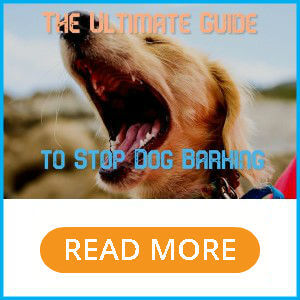I have spent the last 11 years studying behaviourism and applied behaviour analysis in order to create a comprehensive model for the systematic application of philosophy, methodology, and theory to observe communication and influence more socially acceptable behaviour in dogs. My Behavior Consulting Practice has been exclusively maintained through science and with very little consideration to hypothetical constructs such as personality, mood, and emotions. Although I have always considered illness to be a contributing factor to a particular problematic behaviour, especially for sudden changes in behaviour or increases in intensity or frequency of the behaviour, my focus has always been on the conceptual frameworks of conditioning rather than un-observable events that occur in the body or mind. This was until I met Marijke van de Water.
I have always enjoyed my behaviour consulting practice but have felt for a long time that the approach I was taking to animal training and behaviour consulting was very cold – even though I applied the concepts with loving-kindness – and missing an important component; it felt unfinished and incomplete to me. It wasn’t until the Spring of 2013 when I took on a job at Riva’s Remedies that I finally found what I had been searching for in my sub-conscious. I previously presented the “holistic approach to animal wellness” model to my followers and although there were many pieces of this puzzle present in my practice, they were not articulated into the beautiful composition that my heart envisioned.
The first canine case I took on since commencing my employment at Riva’s Remedies was Stella, a five-month-old Cane Corso who came to me for basic training but packed some fairly intense emotional baggage with her, including a fearful disposition towards new dogs and humans. My heart was filled with concern for this cute little puppy who carried such a huge emotional burden at a very young age. I spoke to Marijke about Stella and we decided to use The Marijke Method, a four-step method of energy testing to identify blocked energy fields and pinpoint the specific problems and underlying cause of Stella’s emotional stress. We tested several remedies and flower essence and found that Oregon Grape would benefit her and allow her to trust the goodness of others and feel less paranoid about the world around her. The change in Stella was definitely obvious in particular on our hikes with groups of dogs where she was now less paranoid about the world that she lived in and more relaxed so she could enjoy the experience. I was delighted by the results of such a simple application.
The next case was Boris, a handsome 15-month-old Rotweiller. Boris came to me because his family was worried about his reactive outbursts towards other people and dogs and because of his tendency to pick on the other canine residing in the home. I picked up Boris and transported him in a secured crate to my home to begin our training program together. I am very cautious with new dogs – this is especially true for dogs who have a history of using aggressive acts to avoid situations that cause them stress or anxiety – as the first few moments we have together are very important in gaining the dogs’ trust in me as their guide through the healing process. I want to make sure that the first impression the dog has of me is that I am kind, gentle, and have their best interest at heart.
Poor Boris was so afraid the first day that he wouldn’t even come out of the crate. Patiently I tried my “trainer tricks” using food, encouragement, and praise but nothing was working. I didn’t want to force Boris out of the crate since my main goal for his program was to empower him to feel like he operates in his environment to cause reinforcement to occur. Forcing him is quite the opposite of empowering. So I gave him some water and closed up the truck to try again in a while. After 30 minutes or so I came outside again to see if Boris was ready to exit the vehicle and join us inside the house. He still wasn’t ready. In fact, Boris slept in the truck that night and stayed in the crate until mid-day the next day at which time I found a creative way to help him out of the truck that involved backing up close to the steps at the front of my house so he didn’t have to jump or use a ramp to get out of the vehicle.
Our first interactions indicated strongly that Boris was a very worried individual and needed some additional emotional therapy than operant teaching systems offered him. As I worked through the introductions with the other dogs at my home I could see that Boris was very impulsive and rude with other dogs and that he also had great difficulty adjusting to the new environment. I started him on flower essences – Walnut to ease the transition, Impatiens to help with the impulsiveness, and Chestnut Bud to help him learn once we started our training program.
Boris showed noticeable improvement almost immediately and began to acclimate to his new environment and even relax with the other dogs. We began our training and he championed the program and graduated to leash walking in downtown Vernon BC, with strangers petting him and new dogs approaching him. His confidence soared and he was able to enjoy himself rather than be constantly burdened with worry.
The last case I will share with you today is Elliot, a 2-year-old Pit Bull who came to me because of severe isolation anxiety when she was left alone or was confined to an area. I knew almost immediately upon commencing our program that there was more driving her behaviour than just anxiety. I brought Elliot to Marijke van de Water, founder of Riva’s Remedies, for an assessment and through the application of The Marijke Method, she found imbalances in her hormones and recommended supplementation to start immediately.
The next day Elliot started on Folic Acid, Ashwagandha, B12 and, Chestnut Bud Flower Essence and within 24-48 hours, she was a different and much calmer dog. Results don’t always happen this quickly, but they did for this very special young lady. Once Elliot was calmer, she was able to absorb, process and retain the information she was receiving in her learning sessions with me. Ellie completed her training program and went home to rejoin her family as a much more confident and calmer dog. She happily sleeps in her comfortable crate and can relax when her humans are out of the home. She exceeded my expectations throughout our program and found a very special place in my heart.
Behaviour and Training are my specialties but in many cases, there are more influences of behaviour than we realize. If you are seeking answers, don’t be afraid to look beyond the mainstream approaches to animal training. And although illness and health conditions can influence behaviour, in most cases blood work or a physical exam will not show dietary problems, nutrient deficiencies, many physical imbalances, and/or emotional issues that are truly causing the behaviours to occur in the first place. There is another way. Gifted intuitive healers like Marijke can find the answers that are at the deep root of the problem and holistic practitioners can put together a comprehensive health program to create balance in the body once again.
The holistic approach to health and well-being embodies the mind, body, and soul – and even with effective behaviour modification, if there is a sub-clinical physical or emotional problem in the body causing imbalance, the results will be less effective if these issues are not identified. If there are particular contingencies in place that are causing undesirable behaviours to occur, behaviour modification is definitely required; however, nutrition, natural medicine, homeopathy, and holistic wellness are much-needed pieces of the puzzle to create greater health and well-being.
In closing, I leave you with the thought that our bodies – human and animal alike – are complex machines. There are many parts that contribute to the overall mechanism but those are only parts. If they don’t work together the machine will not operate to its fullest capacity as a whole unit. True healing will take place when the body, mind, and soul are working in unison and have achieved a balance within the self.
by Niki Perry, CPDT-KA, KPACTP, CEMT, Release the Hounds Board Member
Niki’s website: The Beloved Beast




